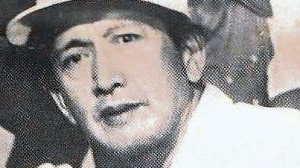Gregorio Fernandez, neglected film master
Dr. Gregorio “Yoyong” Fernandez, a dentist by profession, directed his first movie, 1937’s “Asahar at Kabaong,” starring prewar screen icons, Rosa del Rosario and Jose Padilla Jr. It was produced by Filippine Films, the first talking-pictures studio in the Philippines established by Americans, Stewart Harris and Eddie Tait.
Yoyong’s genius as a filmmaker always came to the fore when his projects tackled weddings and funerals, life and death, and the various repercussions brought about by mistaken identities or missing persons.
“Senorita” (1940) was one of Yoyong’s most popular prewar films. The character played by Carmen Rosales belongs to a rich family who employs Rogelio dela Rosa as her chauffeur. Truth is, he’s actually richer than she is – he just wanted to get through to her!
“Colegiala” begins with the death of Carmen’s parents on her graduation day. A reversal of fortune hits her hard as she is forced to seek employment to support herself.
Sibling rivalry
Article continues after this advertisementIn “Dugo sa Dugo” (1954), the focus is on sibling rivalry, in which the good son (Mario Montenegro) confronts his wayward brother (Johnny Reyes) during the latter’s wedding reception.
Article continues after this advertisementIn “Capas” (1949), Leopoldo Salcedo’s Death March scene is forever etched in the memory of those who saw the film after the war. Together with “Garrison 13” (1946) and “Candaba” (1950), they form a trio of Fernandez’s unforgettable war films exploring heroism and betrayal in rural communities.
Realism
One thing that contributed to the inherent realism of his films was the fact that, even before he started directing, Yoyong spent a decade appearing in silent films as a lead star.
With the advent of talking films, he found himself in a better position to experiment with different themes and genres, like the historical “Gen. Gregorio del Pilar” and “Dagohoy,” and his incursion into social realism, “Squatters.” His other outstanding films include “Higit sa Lahat” and “Malvarosa.”
Few people know that the acclaimed filmmaker is the father of action star, Rudy Fernandez. In 1970, the year before martial law was declared, Yoyong brought his then 18-year-old son to Sampaguita Pictures to sign a contract.
For direk Yoyong, it was a dream come true to see his son following in his footsteps. However, he didn’t live to see Rudy reach the peak of his career as an action star in 1976’s “Bitayin Si Baby Ama.” He died in 1973.
